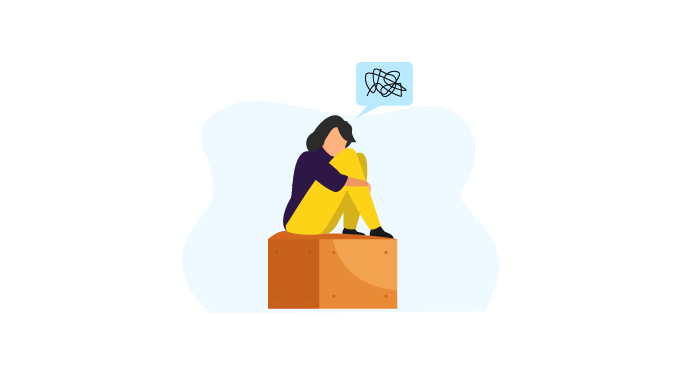The Many Risks of Work Fatigue and How to Manage It
Do your employees seem demotivated, and perpetually tired to you?
Are they having difficulty finishing simple tasks?
Have they been calling in sick at work, more often than usual?
If you answered ‘yes’ to any of the above questions, then it is highly possible that your workforce is suffering from 'work fatigue'.
This simple two-word-terminology can drastically impact the quality and quantity of work done, thereby affecting your company’s performance.
Let us look at what you can do tackle this issue at hand, and have an energetic, and motivated staff to work with.
What Is Work Fatigue?
According to Mayo Clinic, ‘fatigue’ refers to a constant state of weariness that results in reduced energy, motivation, and concentration.
Feeling fatigued at the workplace is often referred to as ‘work fatigue’. It is much more than an afternoon slump. It is a marker of poor physical, mental, and emotional health.
Work Fatigue can be defined as the extreme tiredness and reduced functional capacity experienced during and at the end of the workday.
Given that we have three different types of energetic resources – physical, mental, and emotional, there can be three different types of work fatigue:
1. Physical Work Fatigue

Physical fatigue is the draining or exhaustion of the body due to persistent tiredness. Body fatigue contributes to lower energy and motivation levels at work. At times, it is associated with cognitive and emotional exhaustion.
Any work can be enfeebling for you, be it physical labor or a sedentary job. And, if you frequently encounter physical tiredness, it's high time you change your lifestyle choices. There can be several reasons for the weariness, but one must identify the cause and take action accordingly to eradicate it.
According to Vox, the scientist has observed two main reasons behind physical fatigue in the workplace;
Hypothesis 1: Employees get tired because we deplete an internal store of energy
Hypothesis 2: Employees get tired because their motivation runs out
Work becomes less exciting with fatigue. And, if you are at the risk of becoming one, start mending your health behavior from today.
2. Mental Work Fatigue

Mental fatigue is a form of exhaustion in the brain, and it is when one faces mental clogging or fog. It often leads to unproductivity, de-motivation, and decision making problems at work.
A combination of emotions and physical fatigue factors can lead to mental fatigue. Long-term conditions often can be depicted by apathy, cynicism, and irritability. While factors like demanding life events, low resilience, a challenging job, or procrastination contribute to mental weariness. But, most of the time, it is due to the cognitive burden or external pressure at work.
In today’s world, mental fatigue can make you feel left behind, whether personally or professionally. In order to reduce mental fatigue, practice mindfulness meditation and activities that can prevent it. Overcoming fatigue can be challenging, but it is necessary for one’s overall wellness.
Related: 105 Mindfulness Quotes For Employee Health And Wellness
3. Emotional Work Fatigue

Physical work fatigue refers to a condition when your employees are physically tired and have a lesser capacity to do physical activities during or at the end of the working day.
Mental work fatigue refers to a condition where your employees are mentally tired, with a lesser capacity to partake in any cognitive activities during and at the end of the working day.
Emotional work fatigue refers to a condition where your employees experience extreme emotional tiredness and cannot engage in any vigorous activity during or at the end of the working day.
In the post-covid world, remote working has led to the excessive use of video conferencing tools like Zoom, Skype, Google Hangout and Meet, FaceTime, etc.
Research has shown that this phenomenon has led to something called Zoom Fatigue. This kind of fatigue mainly results from spending hours in front of a screen, that leads to feelings of detachment and anxiety.
Today, it has become essential to focus on employees' emotional agility to avoid emotional fatigue at work.
Read our blog on: Zoom Fatigue: Symptoms, Causes, and Management
Reasons for Experiencing Work Fatigue

Your employees might experience work fatigue due to several reasons. Here are some of the most common factors that lead to workers being fatigued at the workplace:
- Intense in work burden
- Sleep deprivation
- Irregular work schedules or extended shifts
- Shift work
- Lack of physical and mental wellness activities
- Travel
- Improper lifestyle choices
- Organizational change
- Going against the Circadian rhythm
Symptoms of Work Fatigue

As an HR or employer who cares about the people who work in your company, you should keep an eye out for any of the following symptoms in your workforce:
1. Chronic tiredness or sleepiness
If your employees are always tired and exhausted, it is an obvious workplace fatigue case.
According to the National Safety Council, more than 43 percent of workers suffer from sleep deprivation.
2. Reduced concentration and focus
A symptom of work fatigue is the inability to pay attention to instructions, and details and a reduced capacity to focus on tasks.
3. Irritability
Irritability is another symptom of work fatigue.You might notice that an employee is moody or irritable lately. Before concluding it as a bad attitude problem, figure out the reason behind the behaviour. It might result from both work and personal issues.
4. Low Motivation
A lack of motivation to complete tasks can come across as your employee being careless or inactive. But the underlying reason for this might be burnout or emotional fatigue as well.
5. Increased instances of falling sick
Notice if employees are consistently unwell or been regularly absent from work. It might be because they are not well-rested, physically, and mentally. Increased absenteeism too, is a symptom of work fatigue.
6. Headaches
Headaches are often a sign of suffering from fatigue. If your employee is suffering from consistent headaches at work, ask them to stay well-hydrated and well-rested.
Related: 81 Self-Motivation Quotes To Balance A Perfect Professional And Personal Life
Ways in Which Work Fatigue Affects the Workplace

Fatigue is what we experience, but it is what a match is to an atomic bomb.
Laura Hillenbrand
Workplace fatigue can have tangible effects on the way your employees perform. Consequently, it will affect the company’s performance and growth.
Here is how workplace fatigue affects your employees, and in turn, your organization:
1. Increased possibility of injuries
If your employees suffer from fatigue, they are more at risk of occupational hazards and injuries.
Physical and mental fatigue often results in loss of concentration, reduced alertness, poor hand-eye coordination, etc. Such a condition might be dangerous when your workers are operating with heavy machinery, using power tools, etc.
Studies have shown that employees who work 12 hours per day have 37 percent higher risks of accident and injury rate than those who work for fewer hours.
Not only can these workplace injuries compromise empoyees’ lives but also incur business losses.
2. Negatively Impacts Decision Making
When your employees suffer from work fatigue, it affects their analytical abilities. It hampers their ability to think things through and present logical solutions at any given point in time.
Hasty and impulsive decisions made when one is mentally tired will naturally lead to inconvenience and troubles.
3. Lowers employee engagement and productivity
According to OSHA, lost productivity in employees can cost a company up to $136.4 billion in a year.
If your employees are physically and mentally exhausted, productivity and engagement levels drop drastically. Work fatigue in employees will also lead to an increase in sick leaves and absenteeism, which will hamper your company’s overall growth.
Related: 13 Methods To Increase Energy and Motivation At Work
How to Proactively Manage Work Fatigue

You now know about the probable symptoms, causes, and effects of work fatigue.
Let us look at the measures you can take to tackle work fatigue, and consequently, increase employee engagement and productivity.
- Schedule regular breaks and shifts during the workday
- Let your employees have two consecutive days of rest in a week
- Educate and train your employees on work fatigue and what they can do to prevent or manage it
- Do not overload your employees with tasks. Strike a balance
- Incorporate a workplace wellness program aimed at keeping your employees physically, mentally, and emotionally fit.
- Introduce meditation at your workplace
- Try and initiate an open conversation about mental health
- Let your workplace design and interiors be refreshing and peaceful with a lot of natural light, and minimal noise
- Talk about sleep disorders and have your insurance plans cover them
- Be empathetic and practice gratitude
In Conclusion
Thanks to the current hustle culture, work fatigue is a daily and common phenomenon at workspaces.
However, it can be and should be managed proactively.
Check if your company’s work culture is burdening your employees. Be willing to incorporate changes, and communicate extensively.
Employees are the most valuable asset to any company. Ensure that their wellness remains a top priority for you.

Vantage Fit - A complete AI-Powered Solution for seamless implementation of your Corporate Wellness Program to nurture a healthy and engaged workforce




